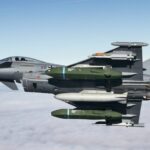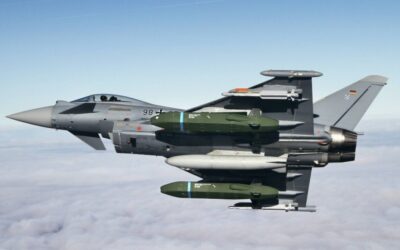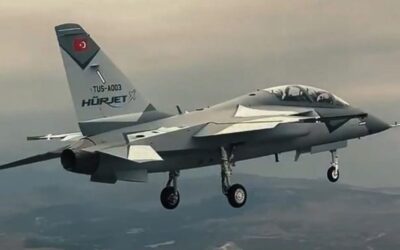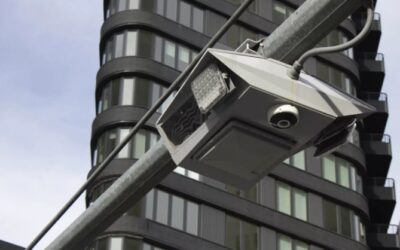The Bundeswehr and TAURUS Systems GmbH (a joint venture between MBDA and SAAB) have signed a contract for the maintenance and…

The BTR-90 Armored Personnel Carrier (APC), which Russia dragged from the storage of the 38th Research Institute in Kubinka, was reportedly spotted in Ukraine.
According to Andriy Tarasenko, a military analyst, has released a video depicting a rare BTR-90 with a white “V” symbol painted on the fronts and sides of the hull.
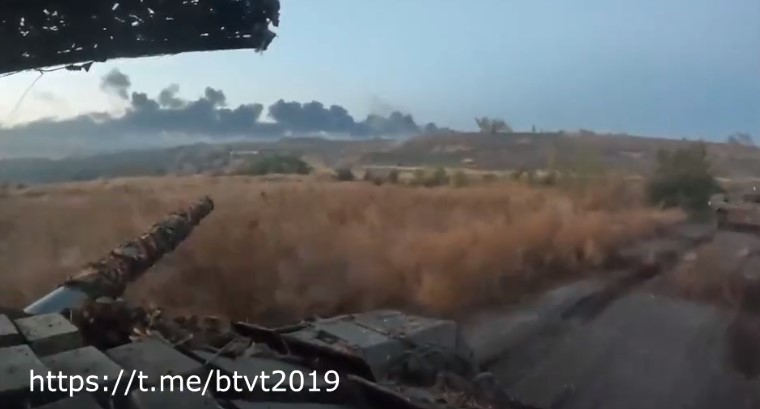
First ever BTR-90 in action. Less than a dozen made and stored in Russia #38 research institute https://t.co/yocNQ3exHL pic.twitter.com/4gAcocJO49
— Andrei_bt (@AndreiBtvt) October 13, 2023
The BTR-90 was adopted by the Russian Armed Forces in 2008, but it was not mass-produced. The APC in question is said to have been part of a larger squadron of Russian combat vehicles, including “Z” tanks, in Ukraine.
Apparently, Russian stockpiles of modern armored vehicles are being reduced to such an extent, that even an obsolete armored personnel carrier was thrown into battle simply to reach the required numbers.
The BTR-90, better known as the Rostok, is a wheeled APC developed and designed in 1993 in Russia, while it was first unveiled publicly in 1994. The BTR-90 has a standard internal arrangement of the Soviet-era BTR-80 family, that is, an engine compartment located in the rear, with the driver seated in front of the hull and the turret, controllers, and troop compartment located in the middle.

BTR-90’s technical characteristics:
- Weight: 20.9 tons
- Length: 7.64 m
- Width: 3.20 m
- Height : 2.98 m
- Crew: 3 (+7 infantry)
- Main armament: 30 mm Shipunov 2A42 gun (500 rounds) / also arms the BMP-2 tracked IFV
- Secondary armament: 7.62 mm PKT machine gun (2000 rounds), 9M113 Konkurs ATGM, one AGS-17D 30 mm automatic grenade launcher (400 rounds).
- Engine: turbocharged diesel 510 hp
- Suspension: wheeled 8×8
- Operational range: 800 km
- Maximum speed: 100 km/h
This vehicle has a slightly larger and higher hull than the previous BTR-80.
In October 2011, the Ministry of Defence refused to buy more BTR-90s and did not include them in the state armament program until 2020, and waived exports for the BTR-90. As such, the vehicles spent a few years rolling with Russian interior troops on a trial basis and then went into storage at the 38th Scientific-Research Institute.
Also read: BMPT “Terminator” | The Russian approach to support urban areas warfare – VIDEO
At the time, there was simply no need for a new BTR. The older BTR-80s, BTR-70s, and BTR-60s were perfectly adequate and in ample supply. Two decades later, things have changed and the BTR-90s are back in action in Ukraine.
It is not hard to understand why the Russians are pulling 30-year experimental vehicles out of long-term storage and sending them to the front line.
In nearly two years of hard fighting, the Russians have lost around 4,000 infantry fighting vehicles and armored personnel carriers. That is roughly a third of the IFVs and APCs Russian forces had in active service in February 2022.
Russian industry might produce a thousand new and upgraded fighting vehicles and personnel carriers in 2023, if comments from Vladimir Artyakov, deputy general director of the Rostec state corporation, are accurate.
The problem with the BTR-90 is not the BTR-90 itself. It is the industrial desperation it shows. The Kremlin is working hard to mobilize its arms industry for a war that could last until 2025 or beyond.
In the meantime, Russian regiments still need fresh vehicles to replace unrelenting combat losses. The regiments will take whatever IFVs and APCs they can get, including experimental BTR-90s.
Also read: T-80U | 25 Years of service in the National Guard and its upgrade options – Infographics & VIDEO
READ MORE
Turkey – Spain | Memorandum of Cooperation for the Development of Turkish Hurjet Training Aircraft
Turkey and Spain have signed a Memorandum of Understanding (MoU) to develop Turkish-made Hurjet trainer-light fighter aircraft.
Northrop Grumman | Winner of the US Navy’s Next E-130J Aircraft Development Program
Northrop Grumman won the $3.5 billion contract for the US Navy’s E-130J nuclear command, control, and communications (NC3)…
Losses for North Korea in Ukraine | 1,100 soldiers have been killed or wounded
North Korea’s losses in the Russia-Ukraine war are heavy, as more than 1,000 North Korean soldiers have been killed or injured…
THEON INTERNATIONAL | Projection for continued growth for the financial year 2025 with a high margin for profitability
THEON INTERNATIONAL PLC (THEON) has announced its projections for the financial year 2025. Revenue is expected to…
Greece | PDPA’s “yes” to Placing Police Cameras on the Streets
The Personal Data Protection Authority gave the green light to the Hellenic Police’s placement of cameras on the streets to prevent and…
MBDA | Modernising TAURUS Missiles for the Bundeswehr
The Bundeswehr and TAURUS Systems GmbH (a joint venture between MBDA and SAAB) have signed a contract for the maintenance and…
Syria | New Minister of Defence Murhaf Abu Kasra
Syria’s new leaders have appointed Murhaf Abu Kasra, a prominent figure among rebels who ousted Bashar al-Assad, as…
Turkey – Spain | Memorandum of Cooperation for the Development of Turkish Hurjet Training Aircraft
Turkey and Spain have signed a Memorandum of Understanding (MoU) to develop Turkish-made Hurjet trainer-light fighter aircraft.











